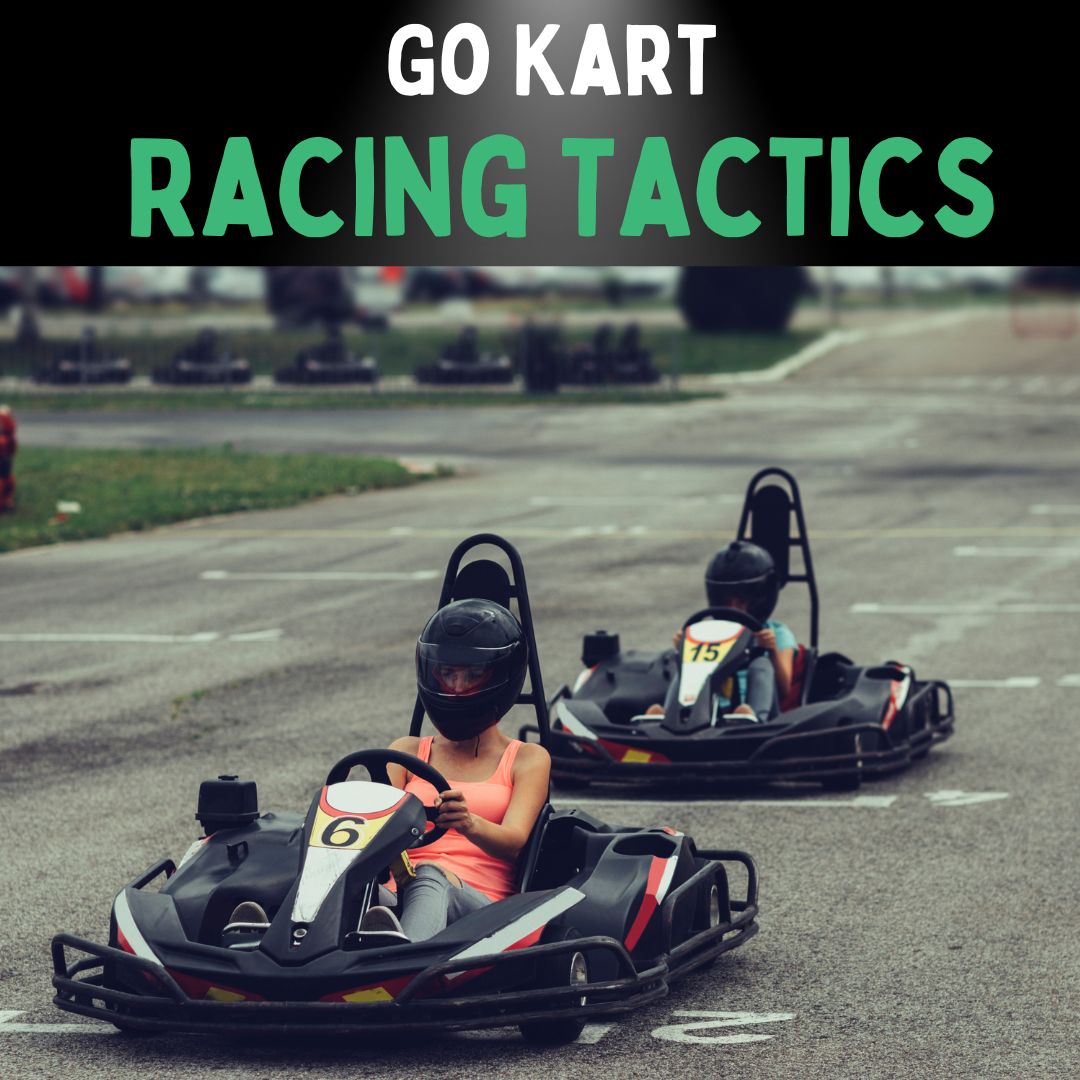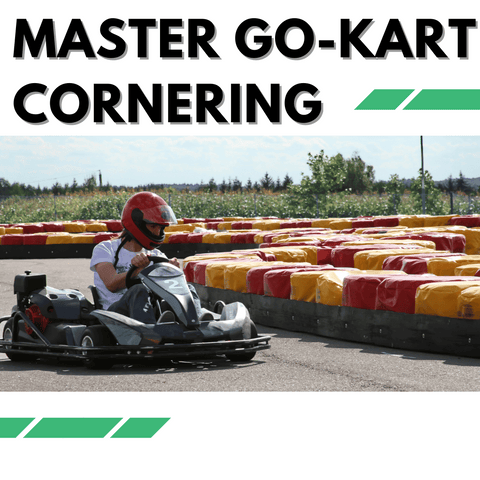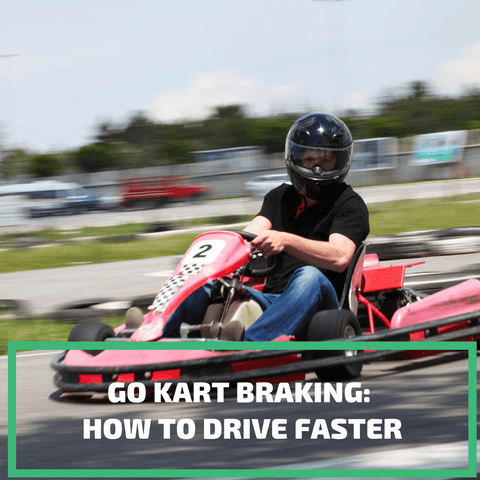
Are you looking for an exhilarating and fun activity for your family, especially for your kids aged 8 and above?
Go-kart racing offers an exciting world of speed, strategy, and skill, perfect for families seeking a unique recreational experience.
In this comprehensive guide, we'll dive into the essential tactics and tips that will not only ensure a safe ride but also enhance the thrill of go-kart racing for your young ones.
Basic Kart Racing Tactics for Beginners
Proper Seating Position and Seat Adjustment
The foundation of any good racer starts with the basics. Ensuring your child is comfortably seated and can easily reach and control the kart is vital.
Proper seating helps in maintaining control and reacting swiftly during the race.
Understanding Racing Lines, Passing Techniques, and Braking Points
It's crucial for young racers to grasp the concept of racing lines - the optimal path around the track.
Learning about overtaking tactics and identifying the right braking points can significantly improve their performance and safety on the track.
Importance of Seat Time for Practice and Improvement
Practice makes perfect. Spending time in the kart allows young drivers to get accustomed to the feel of the kart, the track, and the various techniques they've learned.
Race Strategies
Winning Race Tips: Posture, Overtaking, and Kart Management
Winning isn’t just about speed; it's about smart racing. Maintaining a stable posture, mastering the art of overtaking, and understanding the kart's mechanics play a crucial role in crossing the finish line first.
The Role of Practice and Consistency in Kart Setup
Frequent changes to the kart setup can be more of a hindrance than a help.
Consistency in the setup paired with ample practice is a surefire way to improve race performance.
Safety and Fitness
Essential Safety Gear: Helmets, Harnesses, and Shoes
Safety is paramount in go-kart racing. Ensuring your child is equipped with a proper helmet, securely fastened safety harness, and closed-toe shoes is non-negotiable.
Building Physical Fitness: Arm Strength and Mental Stamina
Go-kart racing is not just about driving; it requires physical fitness too. Exercises that improve arm strength and mental stamina can greatly benefit young racers.
Parental Involvement
Creating an Enjoyable Experience with Rewards and Support
Parental involvement is key to making go-kart racing a rewarding experience for kids.
Using incentives for achievements and providing continuous support and guidance can boost their confidence and love for the sport.
Getting Familiar with the Kart Track
Study and Observation: Learning the Track and Watching Fast Drivers
Understanding the track layout and observing skilled drivers in action can provide invaluable insights into effective racing strategies.
Visualisation and Practice: Using Drills and Visual Aids
Off-track visualisation of the track and using drills and visual aids can help young drivers better understand and memorise the racing lines and strategies.
Passing Techniques
Mastering Out-Braking and Track Visualisation for Overtaking
Passing other drivers is an art. Techniques like out-braking and thorough knowledge of the track are essential for successful overtaking.
The Importance of Patience, Smoothness, and Regular Practice
Smooth driving, patience, and regular practice are crucial in setting up successful passing opportunities on the track.
Improving Cornering Skills
The Wide Approach and Effective Braking
Approaching corners with a wide line and mastering the braking technique are fundamental in maintaining speed and control through turns.
Smoothness and Consistency in Driving
Emphasising smooth and consistent driving helps in maintaining momentum and control, especially through corners.
Visualisation, Experimentation, and Analysis for Corner Mastery
Visualising the racing line, experimenting with different techniques, and analysing performance are key to mastering cornering.
Training and Practice: The Bedrock of Skill Enhancement
Regular training and practice sessions are indispensable in honing the cornering skills of young racers.
Improving Braking Skills
The Art of Smooth Braking
Learning to brake smoothly and progressively is essential in maintaining control and stability of the kart.
Consistency and Regular Practice Drills
Consistency in braking and regular practice drills play a significant role in refining braking skills and building confidence on the track.
Advanced Techniques: Trail Braking and Mini Lock Braking
For more experienced young drivers, techniques like trail braking and the mini lock braking technique can be game-changers in improving lap times and overall performance.
Seeking Professional Guidance for Skill Refinement
Professional guidance can be invaluable in helping young racers fine-tune their braking techniques and overall driving skills.
The Role of Balance in Cornering
In the world of go-kart racing, especially for young enthusiasts, mastering the art of cornering is a crucial step towards becoming a proficient driver.
One often overlooked aspect of this skill is understanding and utilising balance.
Balance in kart cornering is pivotal for optimal handling and performance, influencing how the kart reacts during these critical moments of the race.
Understanding Chassis Dynamics:
The chassis of a go-kart plays a significant role in how it handles corners.
Key factors like the center of gravity, weight transfer, and chassis stiffness are all influenced by balance.
A kart with a well-balanced chassis responds predictably and smoothly, making it easier for young racers to handle.
Weight Transfer and Its Impact:
During cornering, weight transfer is an inevitable phenomenon.
As the kart turns, weight shifts to the outer wheels, affecting grip and stability.
Young drivers need to understand how to manage this weight transfer through their body movements.
By leaning into the turn, they can help maintain an even distribution of weight, keeping the kart stable and maintaining traction.
Adjusting Kart Balance:
Kart balance can be adjusted through various techniques. Roll resistance, for instance, can be managed at both the rear and front ends of the kart.
By adjusting elements like tyre pressure, axle stiffness, and seat position, the balance can be fine-tuned to suit the driver's style and the track conditions.
Using Body Weight to Shift Traction:
Young drivers can use their body weight to their advantage. By shifting their weight, they can influence how the kart grips the track during corners.
This skill requires practice but can be a powerful tool in a racer's arsenal, allowing them to navigate corners with greater speed and precision.
The Importance of Even Weight Distribution:
Proper corner balancing ensures that the weight is evenly distributed across all tyres.
This uniform distribution is key to maintaining grip and stability.
When a kart is properly balanced, it avoids issues like understeering (where the kart doesn’t turn enough) or oversteering (where it turns too much), leading to a more controlled and faster cornering experience.
Practical Exercises for Young Drivers:
Practical exercises, such as slalom drills or controlled cornering on a practice track, can help young drivers get a feel for how balance affects their kart's handling.
These exercises not only improve their skills but also enhance their understanding of how to maintain balance and control, especially in high-speed cornering situations.
By mastering the role of balance in cornering, young go-kart racers can significantly enhance their performance on the track.
This understanding leads to improved grip, stability, and predictability in their maneuvers, making the racing experience not just faster, but safer and more enjoyable.
As young racers develop these skills, they lay the foundation for advanced driving techniques and a deeper appreciation for the dynamics of go-kart racing.
Conclusion
Go-kart racing for kids is not just about the thrill of speed; it's about developing skills, understanding safety, and enjoying a unique family experience.
By following these tactics and strategies, you can ensure that your child not only stays safe on the track but also thrives in the exciting world of go-kart racing.
So, gear up, hit the track, and watch your young racer zoom their way to go-karting success!
FAQs
How does balance affect a kart's cornering performance?
Balance significantly influences a kart's handling during cornering. It impacts weight distribution, weight transfer, and chassis dynamics, all of which are crucial for maintaining stability and grip. A well-balanced kart responds predictably, allowing young drivers to navigate corners more smoothly and with improved control.
What role does weight transfer play in kart cornering?
During cornering, weight naturally shifts to the outer wheels of the kart. This affects grip and stability. Young drivers need to understand how to manage this weight transfer through their body movements. By leaning into the turn, they can help maintain an even distribution of weight, keeping the kart stable and maintaining traction.
How can kart balance be adjusted to improve cornering?
Kart balance can be fine-tuned through various techniques. Adjusting roll resistance at the rear and front ends, as well as elements like tyre pressure, axle stiffness, and seat position, can help optimise balance to suit the driver's style and track conditions, ultimately enhancing cornering performance.
Why is even weight distribution important for kart cornering?
Proper corner balancing ensures that weight is evenly distributed across all tyres, which is essential for maintaining grip and stability. When a kart is properly balanced, it avoids issues like understeering or oversteering, leading to a more controlled and faster cornering experience for young drivers.
Get in Touch 🚀
Loved our article on “Go Kart Racing Tactics for Kids” Got the itch to dive into more wheely-awesome info?
Whether you're a parent or a grandparent, we're here for all your kids ride-on toy questions! 🚗💨
Feeling click-happy?
Jump straight into our wonderland at RiiRoo.com.
Or, if you're more the chatty type, give our Live Chat a whirl and let's talk toys!









Share:
Parents Guide to Go Karting (Updated 2025)
Go Kart Passing – How to Overtake Like a Pro